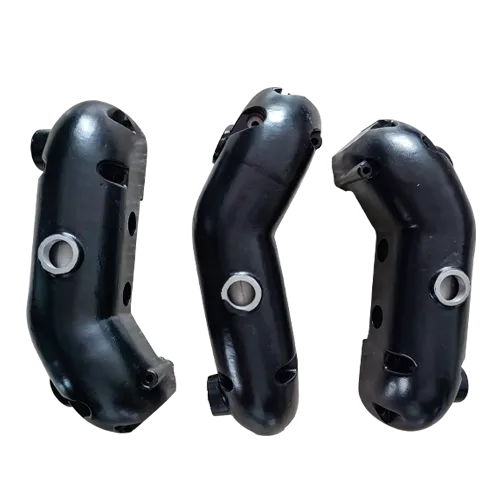Mobile:+86-311-808-126-83
Email:info@ydcastings.com
German
aluminium casting heat treatment
The Role of Heat Treatment in Aluminium Casting
Aluminium casting is a widely used manufacturing process that involves pouring molten aluminium into a mold to create various components. This method is favored for its ability to produce complex shapes and achieve excellent surface finishes. However, to enhance the mechanical properties of aluminium castings, heat treatment plays a pivotal role. This article explores the various aspects of aluminium casting heat treatment, its significance, processes, and the resulting benefits.
Understanding Aluminium Alloys
Aluminium alloys can be broadly classified into two categories wrought and cast alloys. Cast aluminium alloys are further categorized into two groups non-heat-treatable and heat-treatable alloys. The distinction is crucial as it greatly influences how these materials respond to heat treatment processes. Non-heat-treatable alloys derive their strength primarily from work hardening, while heat-treatable alloys achieve strength through solid solution strengthening and precipitation hardening.
The Importance of Heat Treatment
The primary goal of heat treatment in aluminium casting is to improve specific mechanical properties, such as strength, ductility, and corrosion resistance. Heat treatment can also help relieve internal stresses that develop during the casting process. Properly heat-treated castings possess enhanced properties that make them suitable for demanding applications, such as aerospace, automotive, and construction.
Heat Treatment Processes
Heat treatment of aluminium castings typically involves several key processes
1. Solution Treatment This process involves heating the castings to a high temperature (usually between 480-540°C, depending on the alloy) to dissolve the alloying elements into the aluminium matrix. The casting is then rapidly cooled in water or oil to quench it, which locks the alloying elements in place and prevents them from precipitating out.
2. Aging After solution treatment, aged castings are heated at a lower temperature (typically between 150-200°C) for a specific period. This aging process allows the dissolved alloying elements to precipitate out, forming fine particles that enhance the strength of the material. Aging can be done artificially in an oven or naturally at room temperature over time.
3. Stress Relieving Although stress relieving is not always classified as a heat treatment process, it is essential in many cases. This step involves heating the casting to a temperature below its recrystallization temperature for a period of time to reduce residual stresses from the casting process.
aluminium casting heat treatment

Benefits of Heat Treatment
Heat treatment significantly enhances the properties of aluminium castings. Some of the primary benefits include
- Increased Strength and Hardness Through solid solution strengthening and precipitation hardening, the yield strength and ultimate tensile strength of the alloy are greatly improved, allowing for lighter designs without sacrificing performance.
- Enhanced Ductility Properly treated aluminium castings exhibit improved ductility, which is crucial when components are subjected to deformation or stress in service.
- Improved Corrosion Resistance Heat treatment can help develop a more stable and protective oxide layer on the aluminium surface, enhancing its resistance to corrosion.
- Tailored Properties By varying the heat treatment parameters, manufacturers can tailor the mechanical properties of the castings to meet specific requirements for various applications.
Challenges in Heat Treatment
Despite the advantages, heat treatment of aluminium castings poses several challenges. This includes controlling the process to avoid issues such as over-aging, which can reduce mechanical properties, or incomplete solution treatment leading to residual phases that can compromise performance. Additionally, the complexity of some geometries may lead to uneven heating or cooling, necessitating careful process design and monitoring.
Conclusion
Heat treatment is an indispensable step in the processing of aluminium castings, significantly enhancing their mechanical properties and suitability for high-performance applications. By understanding and applying the correct heat treatment processes, manufacturers can produce strong, durable, and lightweight components that meet the rigorous demands of modern engineering. As the demand for advanced materials continues to grow, the role of heat treatment in aluminium casting will only become more critical in ensuring quality and performance in various industries.
-
superior-aluminum-castings-in-automotive-engine-partsNewsAug.22,2025
-
common-materials-used-in-fan-housing-manufacturingNewsAug.22,2025
-
symptoms-of-a-stuck-automobile-water-pump-impellerNewsAug.22,2025
-
the-importance-of-valve-castings-in-water-treatmentNewsAug.22,2025
-
welding-techniques-for-end-cap-stainless-steel-fittingsNewsAug.22,2025
-
how-to-install-a-water-pump-connector-properlyNewsAug.22,2025











